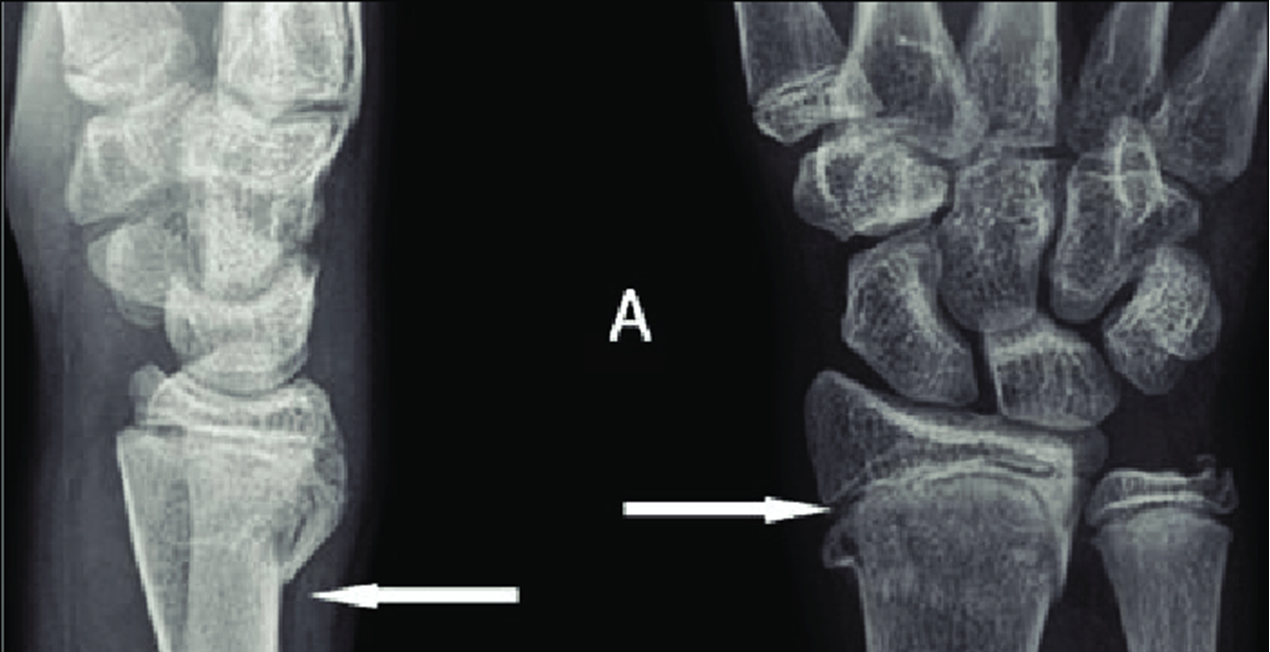


Make sure you see the X-rays, not just the report! Don’t solely rely on the radiologist’s report.Volar buckle fractures are less common, more difficult for emergency physicians to appreciate, and more likely to be mismanaged these should be molded in extension.For these fractures, the distal fragment tends to shift dorsally the fractures should be molded in flexion. If the dorsal buckle fracture extends to the volar side or if the distal fragment is dorsally angulated, then it is not a simple dorsal buckle fracture. Transverse fractures (also called complete or bicortical fractures) can be subtle on X-ray.Simple dorsal buckle fractures are stable.The Clinical Pearls: Pediatric Distal Radius Fractures Optimal ED management requires us to recognize the subtle differences between these pediatric distal radius fractures. However, two of the cases should be molded in flexion the third case, in extension. For the other three cases, they require well-molded immobilization in the emergency department. Of the above four cases, the radiology report for each may read, “buckle fracture of the distal radius.” One case is a simple buckle fracture, and it tends to be overtreated in the emergency department. What is your diagnosis, emergency department treatment, and follow-up plan for each? Each is mildly swollen and tender at the distal radius, closed, neurovascularly intact, and without scaphoid (or other carpal) tenderness. Here are X-rays of four pediatric patients with isolated wrist injuries after a fall. This debut column will deal with pediatric distal radius fractures. The AAP Executive Committee granted final approval of the list.Written from the perspective of an emergency physician who also runs a weekly minor fracture clinic, this column will highlight a few key teaching points for commonly missed and commonly mismanaged ED orthopedic cases. Various expert committees and sections of the AAP reviewed and approved the list. POSNA Board of Directors provided further feedback and voted on the final list. The Executive Committee of the Orthopaedic Section of the American Academy of Pediatrics (AAP) reviewed the 5 listed items and provided further feedback. The Evidence Based Committee reviewed the appropriate literature to provide references and support for each item. Both committees then agreed on final list of 5 items based of frequency of responses and importance of the condition.

The items were tallied in order of number of times that item was listed by each surgeon. Each surgeon, in a blinded fashion, submitted 5 items each from their practices and experience of tests or procedures that they found were commonly over-utilized. Approximately 20 members of these two committees participated in the process. The Pediatric Orthopaedic Society of North America (POSNA) Evidence Based Medicine Committee and the Advocacy Committee worked together during 20 to develop five items in the practice of Pediatric Orthopaedics of tests or procedures that should not be done routinely. Patients with any specific questions about the items on this list or their individual situation should consult their physician. These items are provided solely for informational purposes and are not intended as a substitute for consultation with a medical professional.
#Buckle fracture full#
If the fracture is non-tender to palpation at 4 weeks post-injury, no follow-up radiograph is required, and full activities may be resumed. The mild cortical angular deformity reliably remodels over time and requires no intervention or monitoring. Instead immobilization with a simple wrist brace or removable splint is often preferable. These fractures are inherently stable and do not necessarily require a formal cast, unless severe pain or fracture instability necessitates a cast for 4 weeks. The fracture is one of compression, where the metaphyseal bone impacts on itself, and actually becomes denser. View all recommendations from this societyĭo not order follow-up X-rays for buckle (or torus) fractures if they are no longer tender or painful.īuckle (torus) fractures are very common injuries in young children, especially in the distal radius. American Academy of Pediatrics – Section on Orthopaedics and the Pediatric Orthopaedic Society of North America


 0 kommentar(er)
0 kommentar(er)
